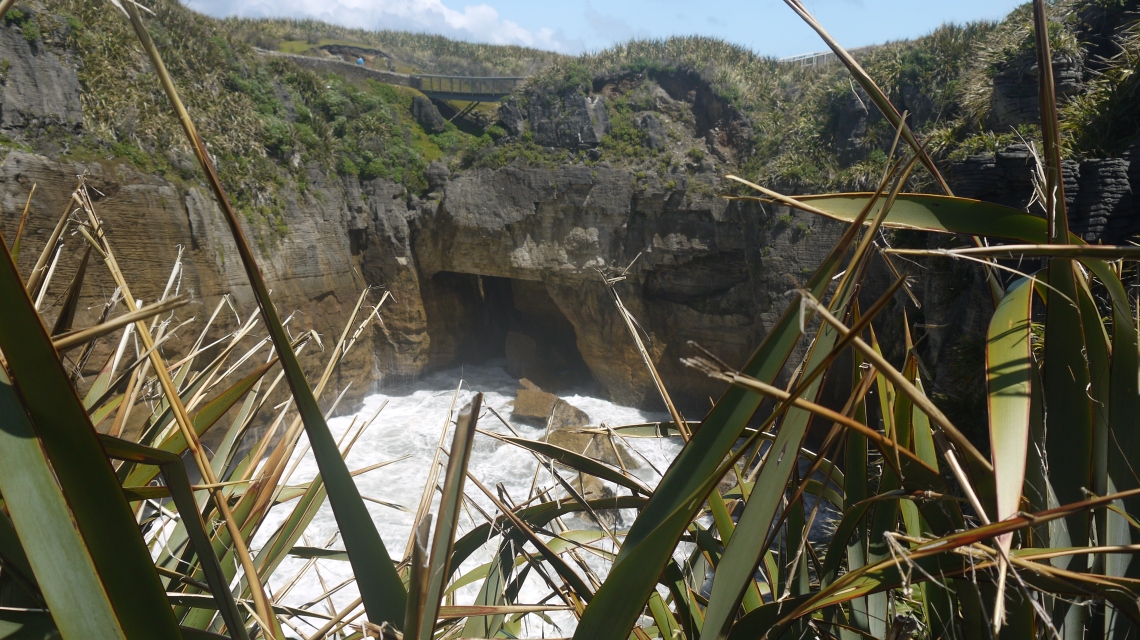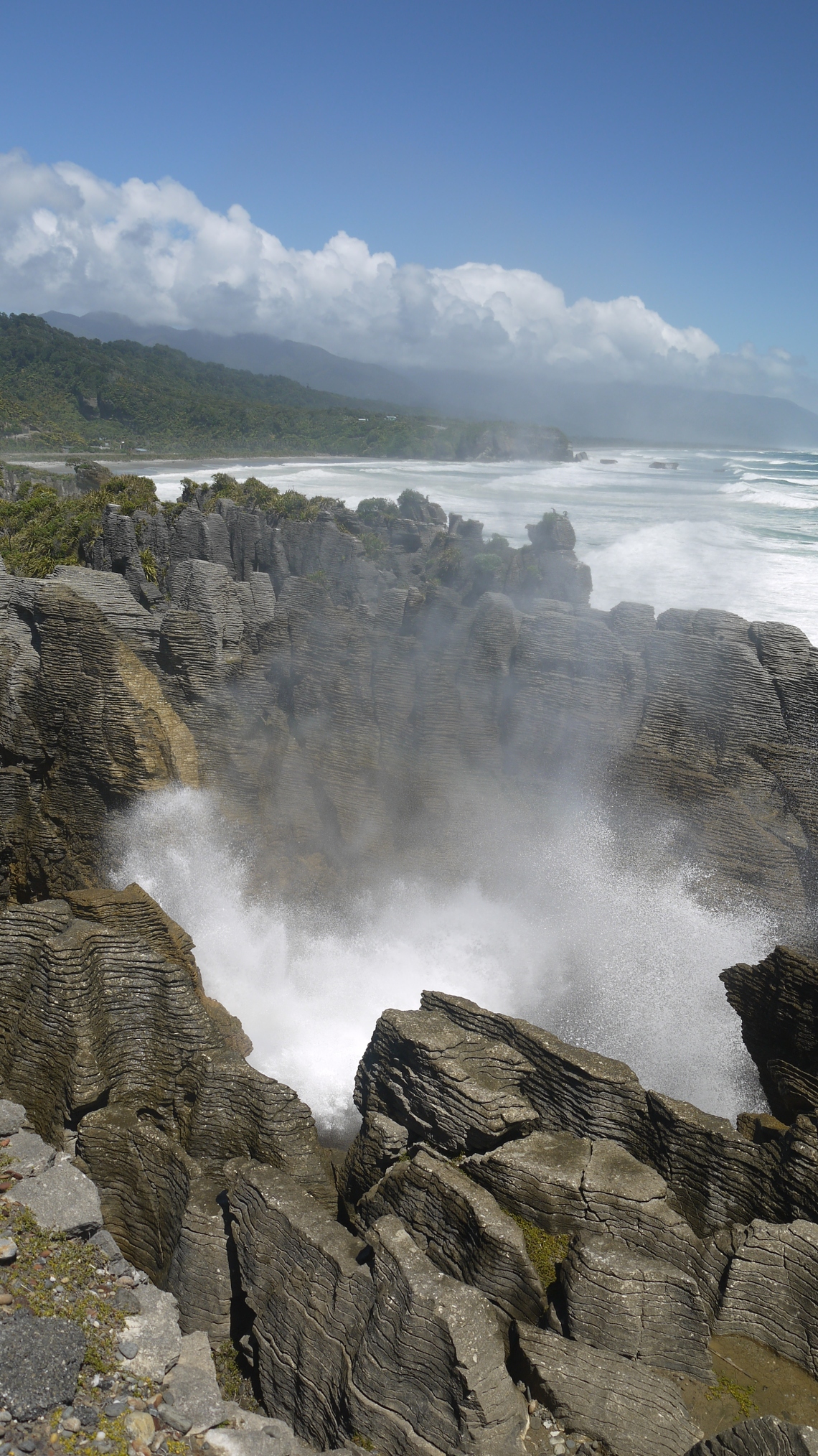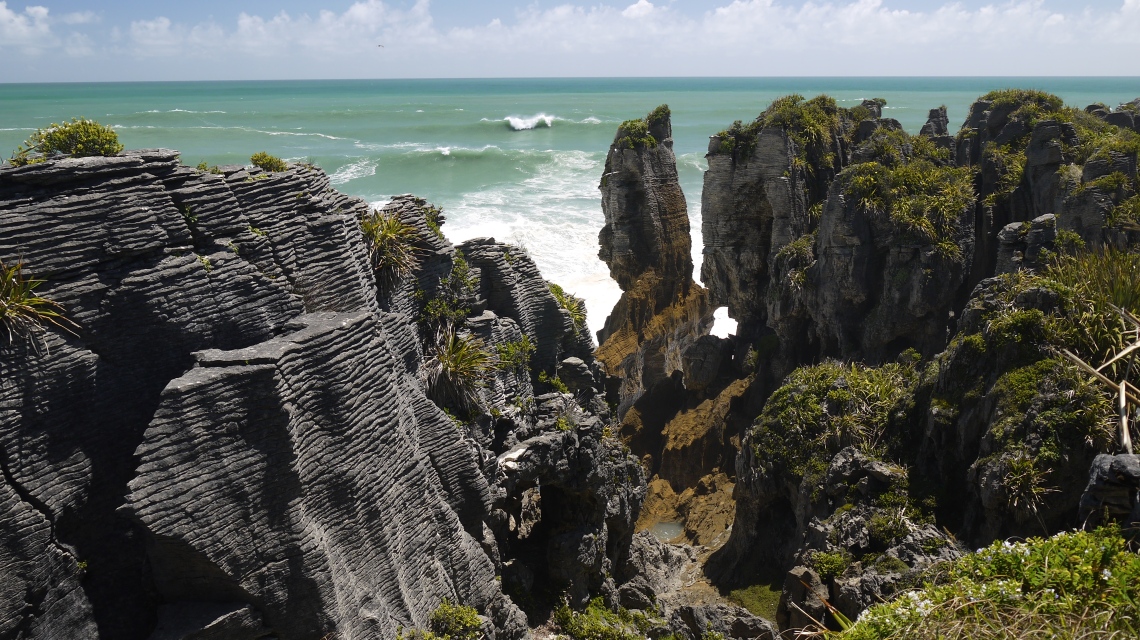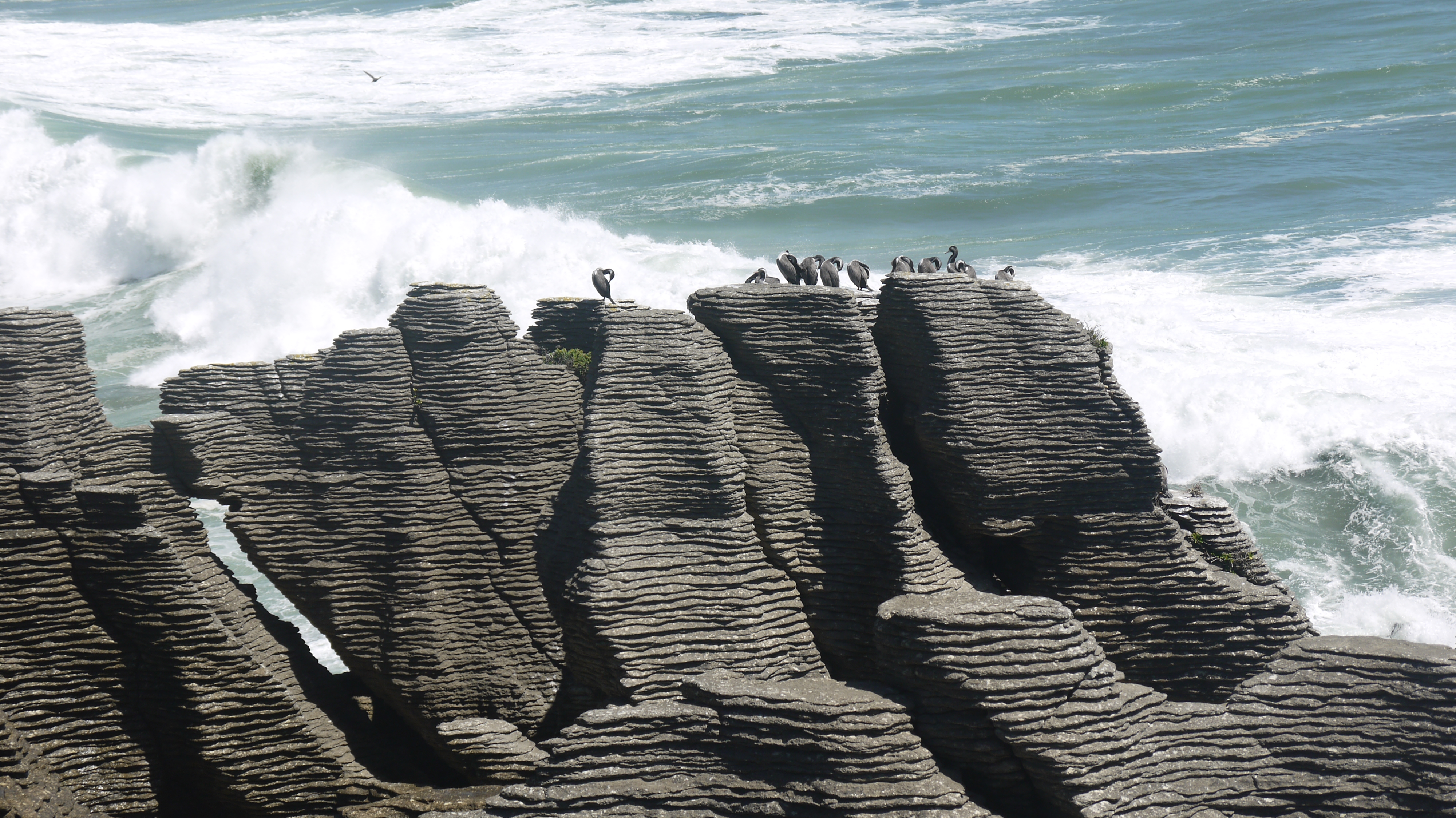Sometimes, you come across a place you never heard of. A place that is just a rest stop on a long journey. A place that surprises and educates you. I encountered this with my wife Sue, as we motored down the west coast of New Zealand’s South Island towards Fiordland and discovered the astounding rocks of Punakaiki at Dolomite Point, layered like stacks of pancakes.
Punakaiki’s Pancake Rocks evolved over 30 million-years-ago, when hard fragments of expired lime-rich marine creatures set-down upon the sea bed, overlaid by soft plant sediments. Then earthquakes uplifted these layered deposits of resistant limestone and thin, mud-rich deposits above sea level, and were carved, compacted and solidified into these peculiar shapes by wind, rain and the Tasman Sea’s tenacious pressure. Actions which created these cliffs, bored caves, blowholes (geysers), lop-sided chasms and underground rivers. Sensing the roar of the churning waves rolling on the beaches in a white frothy surf, and the thunderous smack of water pounding rocks amid the whistling wind brings credence to the setting.

On closer examination, the rocks are seldom flat like pancakes, with the limestone and the softer vegetated layers varying in jagged contours. Cliff faces also differ in clusters as if segments of a family tried to break away but remain bound together. Various layers have slight period colour changes, representing millions of years, where the historical formations have been estimated, much like the growth rings of large trees. Erosion also sculptured the panorama, cutting gaps to the sea by the bombardment of waves and surf gushing into the narrow cavities, like fire hydrants bursting their projectile sprays high enough to soak unsuspecting onlookers before cascading to the rocks, with the shimmer of fleeting rainbows adding to the spectacle. The sprays more intense and spectacular during high tides.
Complementing the breathtaking scenes, low lying scrub grass, flax and other native plants scatter the rocky expanse, and Nikau Palm Trees grow around the shoreline, enabled by the distinct presence of warm air currents from Australia across the sea.

Dolomite Point area offers hiking trails, horse trekking and idyllic viewpoints to observe dark-brown Fur Seals that frequent Punakaiki’s craggy rocks and surf-bound beaches. Likewise, Hector Dolphins, the smallest of that species can be spotted off the shores of the swirling blue and white-capped expanse of the Tasman Sea. A haunt for resting seabirds atop the rocks, as the Spotted Cormorant (Spotted Shag), the Westland Petrel and the White-Winged Tern, amongst many others engage in seasonal visits.
It’s as if Punakaiki’s secrets have unfolded before us and allowed spectacular access to view this natural phenomenon that brings historical significance to another place in earth’s wondrous evolution.

BIO: John’s work and other adventures have taken him to many different parts of the world, where human volatility and disregard for the planet’s environmental health are at risk. His travel stories have appeared in Wanderlust, Our Canada Magazine, and The Vancouver Sun.
Instagram: john.a.barrett



Sarah, Thank you for my published piece – Punakaiki Pancake Rocks. As before, there must be something in the transfer process that strings words together, eg. Fiordlandand, thesecliffs, representingmillions, hydrantsbursting etc. This was not as submitted.
I do appreciate your previous comments, and as you said before, if I had any other stories to submit I should let you know. Actually, I do have many stories I was thinking of submitting in due course. As well, in what could be regarded as an ongoing story reminder from hats I collected from all over the world. This ranges from Nepal (Sherpas’ hat), a South African Slouch hat (from the boar war with the original sweat, I’m told), a Philippines Gourd hat, an Arab headdress from Petra in Jordan, and many others. The hats are reminders of stories that happened in the places I acquired them, and not only about the hats, although I have photos for each hat, as well as the places. Let me know what you think. This reply was also sent by your submittable link.
Thanks, John.
LikeLiked by 1 person